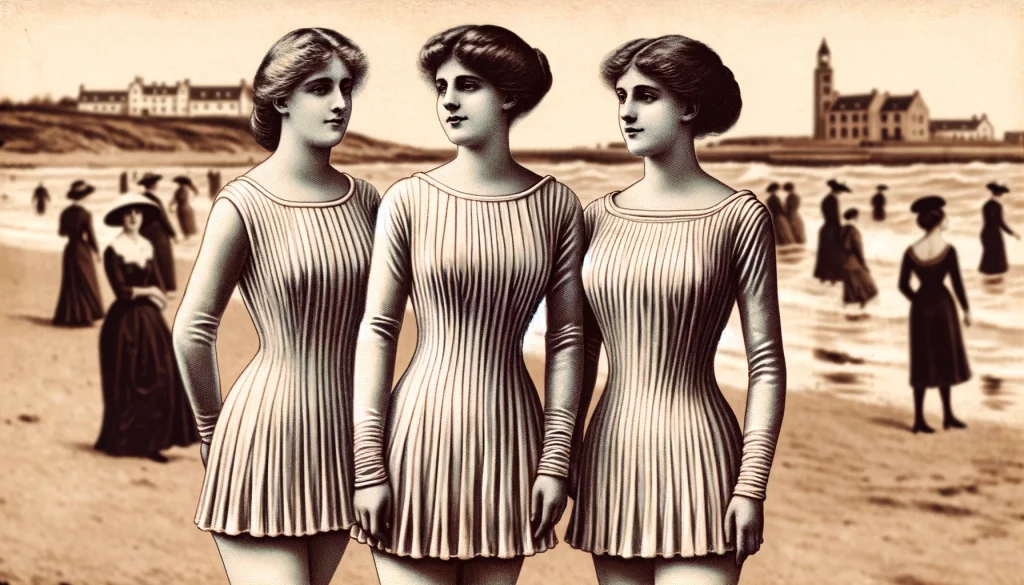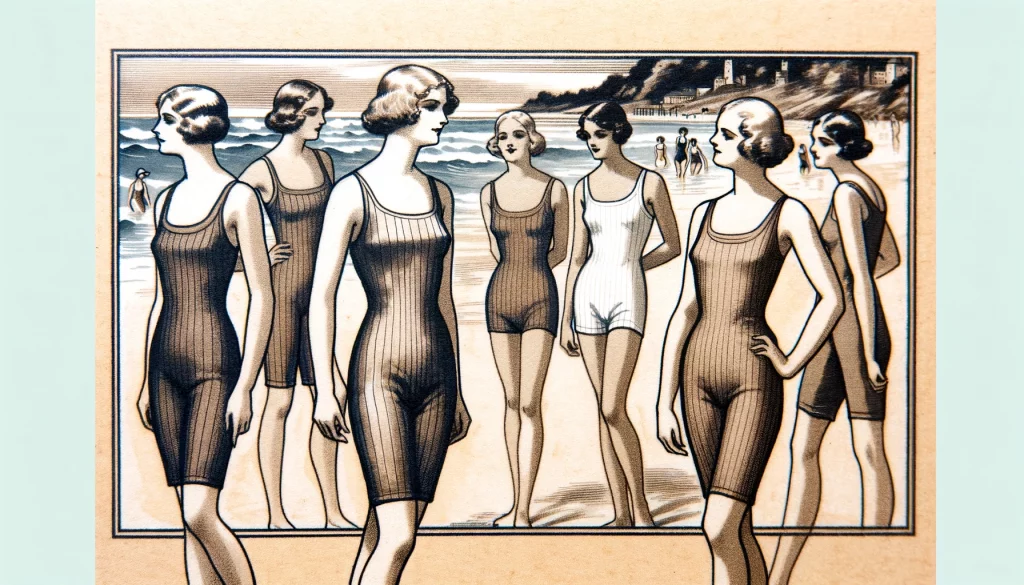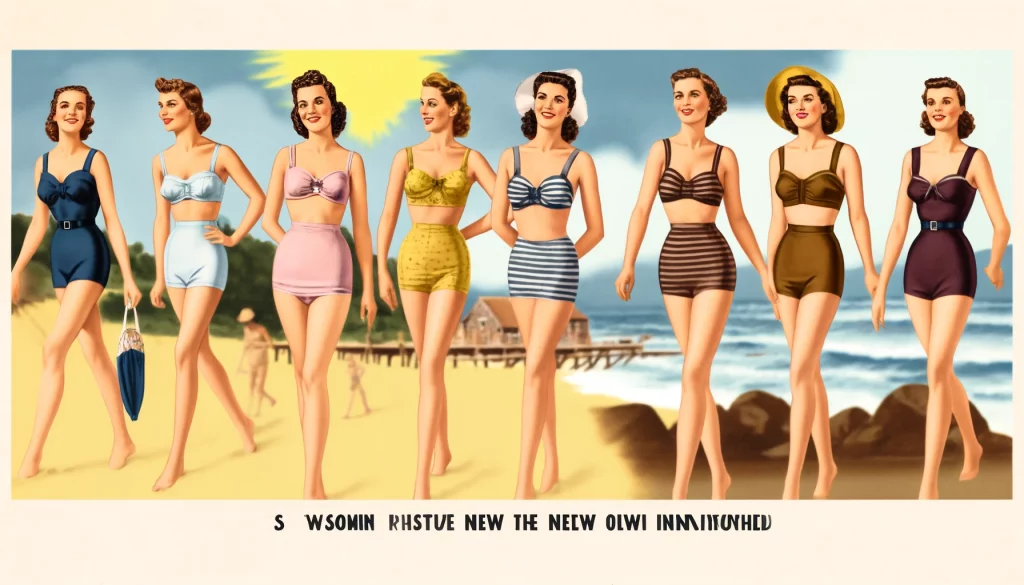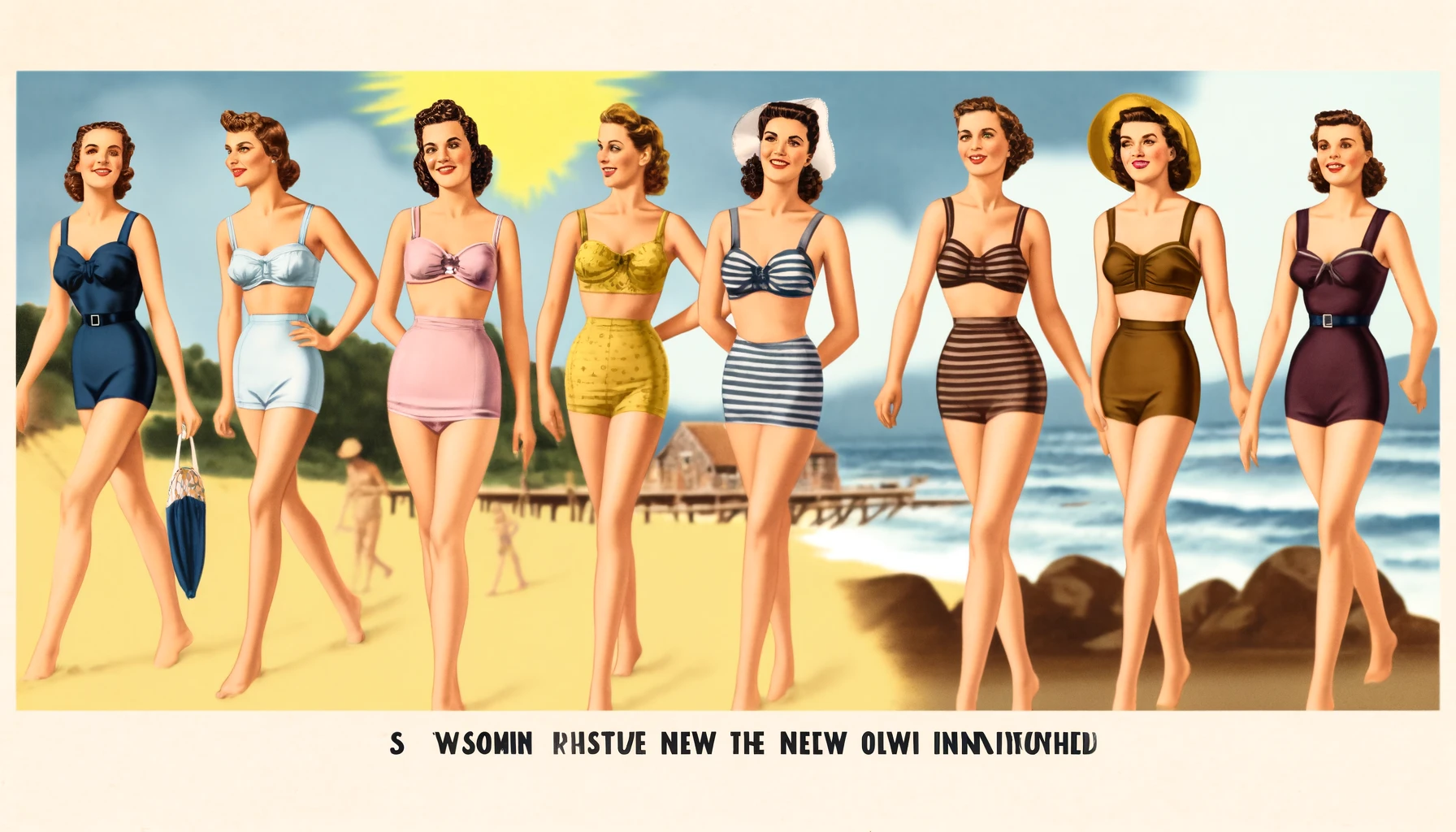The Evolution of Women’s Swimwear Over the Past 120 Years
Women’s swimwear has undergone a dramatic transformation over the past 120 years, reflecting changes in fashion, society, and attitudes toward the female body. From modest full-body suits to today’s diverse and revealing styles, the history of women’s swimwear is a fascinating journey through time.
Early 1900s: Modesty and Functionality
In the early 1900s, women’s swimwear was designed for modesty and functionality. Swimsuits were made of heavy wool and often featured long sleeves, high necklines, and knee-length skirts. These suits were cumbersome and not ideal for swimming, but they adhered to the strict modesty standards of the time.

1920s-1930s: The Rise of the Swimsuit
By the 1920s and 1930s, swimwear began to change as women’s roles in society evolved. Swimsuits became more form-fitting and practical, made from lighter materials like cotton and jersey. The one-piece swimsuit emerged, featuring shorter hemlines and sleeveless designs that allowed greater freedom of movement. This era marked the beginning of swimwear as a fashion statement.

1940s-1950s: The Bikini Revolution
The 1940s and 1950s brought a significant shift in women’s swimwear with the introduction of the bikini. First introduced in 1946 by French designer Louis Réard, the bikini was a bold departure from traditional swimwear, featuring a two-piece design that exposed the midriff. The bikini gained popularity in the 1950s, thanks in part to Hollywood stars like Brigitte Bardot and Marilyn Monroe, who embraced the new style.

1960s-1970s: Experimentation and Freedom
The 1960s and 1970s were decades of experimentation and freedom in fashion, including swimwear. Designers played with new materials like Lycra and introduced vibrant colors, bold patterns, and innovative cuts. The monokini, a topless swimsuit designed by Rudi Gernreich, made waves in the 1960s, while the 1970s saw the rise of the string bikini, pushing the boundaries of what was considered acceptable beachwear.#

1980s-1990s: Athletic and High-Fashion Swimwear
In the 1980s, the fitness craze influenced swimwear design, leading to the popularity of athletic swimsuits. High-cut legs, low necklines, and bold colors defined the era. Swimsuits became more functional, catering to active lifestyles and competitive swimming. The 1990s saw a blend of athletic and high-fashion swimwear, with iconic styles like the Baywatch-inspired one-piece becoming a cultural phenomenon.
2000s-Present: Diversity and Inclusivity
The 2000s to the present have been characterized by a focus on diversity and inclusivity in swimwear. Designers have embraced a wide range of body types, offering styles that cater to different shapes and sizes. Swimwear today includes everything from modest burkinis to barely-there bikinis, reflecting a society that values personal choice and self-expression. Sustainable and eco-friendly materials have also gained popularity, addressing environmental concerns in fashion.
Conclusion
The evolution of women’s swimwear over the past 120 years is a reflection of broader social changes and the ongoing quest for personal expression and freedom. From the modesty of the early 1900s to the bold and diverse styles of today, swimwear has continuously adapted to meet the needs and desires of women around the world. As society continues to evolve, so too will the fashion and functionality of women’s swimwear.




